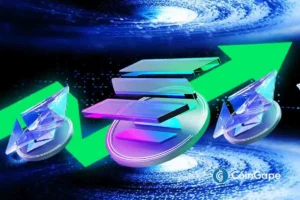Mastercard’s Strategic Embrace of Stablecoins: A New Era in Payments
Mastercard, the American fintech giant, is making significant strides in the stablecoin and blockchain ecosystem. As of April 28, the company announced its comprehensive end-to-end capabilities for stablecoin acceptance, reinforcing its commitment to evolving payment solutions in a rapidly changing regulatory landscape. This move not only aligns with the increasing global focus on digital currencies but also positions Mastercard at the forefront of payment innovation.
The Mastercard Stablecoin Solution
With an aim to enhance the future of payments, Mastercard is broadening its capabilities in the stablecoin space. The company emphasizes that these digital tokens are transitioning from mere trading tools to sophisticated payment instruments. By introducing new partnerships with various crypto firms, Mastercard is establishing an integrated approach to facilitate stablecoin adoption. This includes collaborations with prominent players like MetaMask, Kraken, and others, enabling users to earn rewards and transact with stable tokens through easy-to-use wallets.
Moreover, Mastercard’s partnerships extend to merchants such as Nuvei, Circle, Paxos, and OKX, enhancing the overall functionalities of stable tokens. The company is determined to lead in crypto innovations and believes this strategy will greatly contribute to its competitive edge in the marketplace.
The Current State of the Stablecoin Market
Today, the stablecoin market is buzzing with activity, highlighted by a current market capitalization of approximately $238.39 billion. Major players such as Tether’s USDT and Circle’s USDC continue to dominate the space; however, newer entrants like Ripple USD (RLUSD) are gaining momentum and presenting challenges to established competitors. With a notable increase in RLUSD volume, speculation is rising that this token could soon compete effectively with its more established counterparts.
In addition to these developments, Tether has recently launched the first attestation for its gold-backed stablecoin, XAUt, which is supported by approximately 7.7 tonnes of gold. This initiative signifies Tether’s commitment to enhancing its token’s utility.
Regulatory Landscape and Its Implications
As stablecoins gain traction, regulatory bodies in the United States are beginning to pay closer attention. The shifting views with the US Securities and Exchange Commission (SEC) and the Federal Reserve underline a growing consensus for expedited regulation in the stablecoin sector. With an anticipated regulatory timeline in August, fintech giants including Mastercard are keenly positioning themselves to leverage these changes.
This urgency is indicative of a competitive payment landscape where Real World Asset (RWA) tokenization is becoming increasingly pertinent. The proactive regulatory approach, initially instigated during the Trump administration, is forging a new path for the cryptocurrency ecosystem, encouraging various players to adapt and thrive.
Future Directions for Mastercard
Mastercard’s entrenched relationships with both crypto firms and established merchants could serve as a valuable blueprint for future endeavors in the fintech space. The company’s belief in stablecoins as a significant driver of payment innovations reflects a broader strategic insight into consumer behavior and financial trends. As the landscape grows more competitive, Mastercard’s end-to-end solutions aim to simplify user interactions with stablecoins, potentially boosting adoption rates among businesses and consumers alike.
Furthermore, Mastercard’s continuous exploration of technology and regulatory developments positions it uniquely in an evolving market, underscoring its ambition to remain a major player in the fintech landscape.
Summary and Final Thoughts
In conclusion, Mastercard’s recent advancements in stablecoin solutions signify a calculated move to reinforce its leadership within the digital payments arena. By fostering strategic partnerships and maintaining a forward-thinking approach toward regulation, the company is shaping the future of financial transactions. As the stablecoin market continues to evolve, Mastercard’s initiatives may serve as a crucial indicator of broader trends and shifts within the financial ecosystem.
As we look ahead, it is clear that the fusion of traditional finance and blockchain technology remains an exciting frontier, promising enhanced payment solutions that will ultimately reshape how consumers and businesses interact with digital currencies.
This article provides an in-depth exploration of Mastercard’s latest innovations in the stablecoin realm while also considering the regulatory landscape and market conditions. By focusing on SEO-optimized strategies, it aims to attract engagement from both crypto enthusiasts and newcomers looking to understand the evolving financial landscape.

















